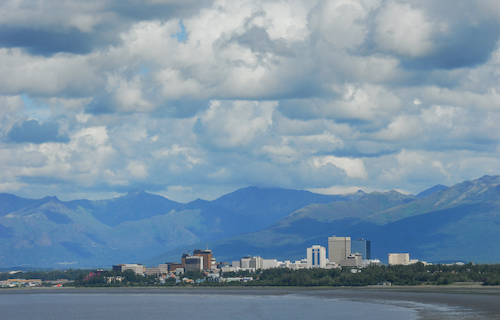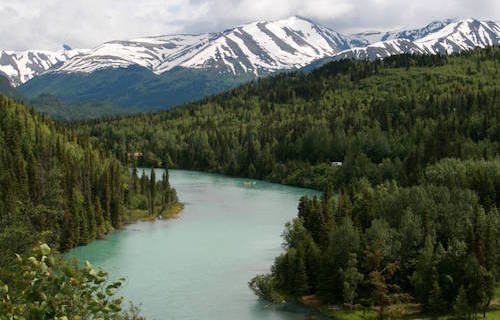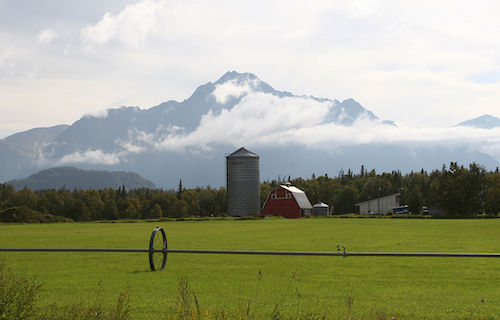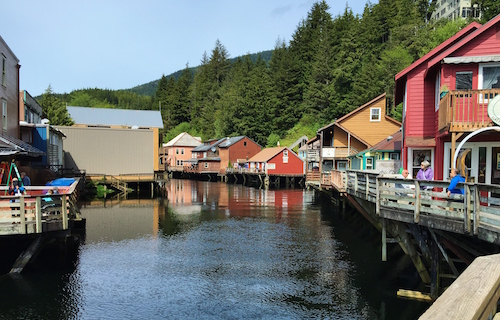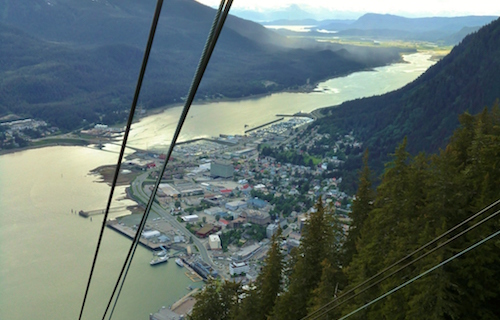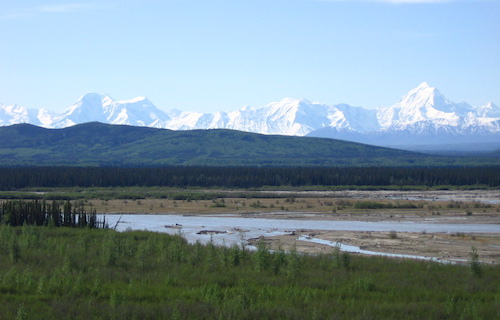Senate Passes Murkowski’s Interior-Environment Funding Bill
Investment in Health, Safety and Lands
U.S. Senator Murkowski (R-AK) today applauded Senate passage of the Interior, Environment, and Related Agencies Appropriations bill for Fiscal Year 2020. As chairman of the Interior Subcommittee, U.S. Senator Lisa Murkowski (R-AK) crafted a bill with funding to strengthen local economies, provide for basic necessities like water and wastewater infrastructure, and create safer and healthier communities. The Interior Subcommittee is responsible for funding agencies that are tasked with managing our public lands, ensuring clean water and clean air, meeting federal trust responsibilities for Native peoples, and funding cultural agencies and museums.
Click here for a full list of Alaska-related provisions and funding levels in the Interior-Environment bill.
The Interior funding bill was part of a four-bill funding package which also included the Fiscal Year (FY) 2020 Appropriations bills for Agriculture, Rural Development, Food and Drug Administration; Commerce, Justice, Science; and Transportation, Housing and Urban Development. The bill package passed in a vote of 84-9.
“In this bill we provide much-needed support for communities across the nation by investing in programs aimed to protect our land, water, and people. We enable infrastructure projects that will boost local economies, help Alaskan communities provide vital, basic services, and prioritize health and safety. We address the crisis of missing, trafficked, and murdered indigenous women by creating a more comprehensive federal response to the issue. This includes investments in equipment, training, and background checks, as well as for cold case investigations. Following the significant wildfires this summer in Alaska and currently happening in California, we further invest in fire suppression, state and volunteer fire assistance, and provide increases for hazardous fuels reduction. The bill also provides funding for Targeted Airshed Grants, which will help communities like Fairbanks as they work to address PM 2.5 issues,” Senator Murkowski said. “From unanimously passing the bill out of Committee just last month to now strong support in the Senate, I’m proud of our good, bipartisan work to ensure that this bill directs federal resources where they are needed most. This legislation will have a lasting impact on Alaska.”
SAFER COMMUNITIES
New this year, the bill provides funding to address the crisis of missing, trafficked, and murdered indigenous women by providing support for cold case investigations, equipment, training, and background checks. The bill also encourages the Indian Health Service to look at programs which can help educate community health aides on trauma informed care and collecting medical evidence. The bill increases funding for the Commission on Native Children created to identify the complex challenges facing Native children in Alaska and across the country by conducting an intensive study on issues such as high rates of poverty, unemployment, child abuse, domestic violence, crime, substance abuse, and dire economic opportunities.
The bill also provides funding for important programs that help emergency responders respond to natural hazards, disasters, as well as inform the public. Support for the earthquake hazards program will help states like Alaska develop and enhance earthquake monitoring capabilities. The bill also maintains funding for Alaska mapping initiatives that will help gather data to improve maps, enhancing the safety of activities such as aviation. This summer Alaska received recording breaking heat and devastating fires. This bill not only invests in fire suppression, it also invests in state and volunteer fire assistance and provides increases for hazardous fuels reduction.
HEALTHIER COMMUNITIES
Significant funding is provided to improve access to Native health care, support rural health care facilities, and improve health care delivery. The bill increases funding for Village Built Clinics and other tribally leased facilities providing healthcare under the Indian Self Determination Act. The Village Built Clinic program is unique to Alaska and supports approximately 150 healthcare clinics in rural areas, many of which require intensive maintenance and often serve as the only health facility and source of medical care in the respective region. Through the Small Ambulatory Clinics program, the bill maintains funding to make infrastructure improvements to provide healthcare delivery to Alaska Natives. The bill also fully funds contract support costs, the operational and overhead costs in the Bureau of Indian Affairs (BIA) and the Indian Health Service (IHS), to ensure tribes have the necessary resources they need to deliver programs and services. This is especially important to Alaska because all healthcare for Alaska Natives is directly provided by tribal organizations.
STRENGTHENING LOCAL ECONOMIES
The Interior bill also fully funds the Payment in Lieu of Taxes (PILT) program. The PILT program provides monetary compensation to local governments throughout Alaska that contain federal lands. The revenue helps local governments provide vital services, such as firefighting and police protection, construction of public schools and roads, and search-and-rescue operations. The bill prioritizes infrastructure improvements on our nation’s public lands, which is key to both local visitors and the tourism sector. The bill also includes funding for Forest Service recreation activities – including cabins, trails, and recreation – and provides resources for special use permitting programs that allow certain businesses to operate in Alaska’s national forests.
IMPROVING WATER INFRASTRUCTURE
The bill provides robust funding to improve wastewater and drinking water systems through the Environmental Protection Agency’s (EPA) Clean Water and Drinking Water State Revolving Funds and numerous grant programs which help bring basic water and sewer infrastructure to communities. The bill also supports the improvement of existing water systems and sanitation facilities in rural Alaskan communities and Native Villages. The bill addresses PFAS contamination by providing increases to EPA grant programs which support state-led cleanup and remediation efforts of PFAS contaminated water sources, water systems, and lands.
PROTECTING WATERSHEDS AND LANDS
Investments in infrastructure improvements on federal lands and funding for the National Park Service to address backlog maintenance are both included in the legislation. This bill also provides funding for legacy well cleanup, and further directs the Bureau of Land Management to craft a long-term funding plan to complete the clean-up of the wells within ten years. Increased funding is allocated for addressing transboundary water river quality, specifically for stream gauges and a water quality baseline strategy, including directing the U.S. Geological Survey to work cooperatively with local tribes, stakeholders, and other federal agencies necessary to help develop a water quality strategy for transboundary rivers.
The bill also recognizes the importance of the Bristol Bay ecosystem and the concerns the EPA, Department of the Interior, the National Marine Fisheries Service, the State of Alaska and independent experts have raised with regard to the U.S. Army Corps of Engineers’ draft Environmental Impact Statement for the proposed Pebble Mine. The bill reaffirms that sound science must drive the permitting process and that if the concerns raised by the agencies cannot be answered within the process, then the agencies should exercise their authority to protect the region’s world-class salmon fisheries.
The Interior, Environment, and Related Agencies Appropriations Subcommittee controls funding levels for federal agencies and departments including the Department of the Interior (DOI), Environmental Protection Agency (EPA), Bureau of Land Management (BLM), Fish and Wildlife Service (FWS), Forest Service (FS), National Park Service (NPS), U.S. Geological Survey (USGS), Bureau of Indian Affairs (BIA), and Indian Health Service (IHS), as well as NEH, NEA, and the Smithsonian Institution (SI).

